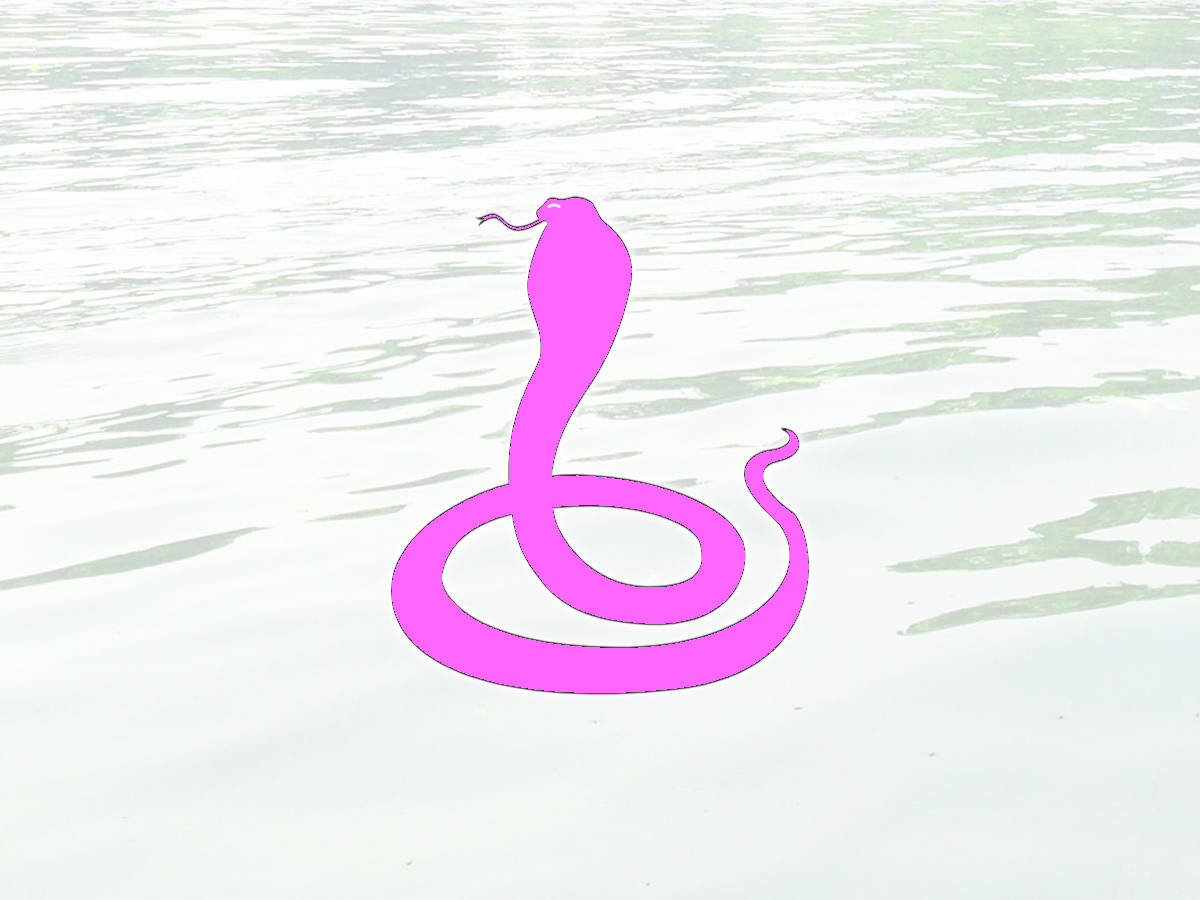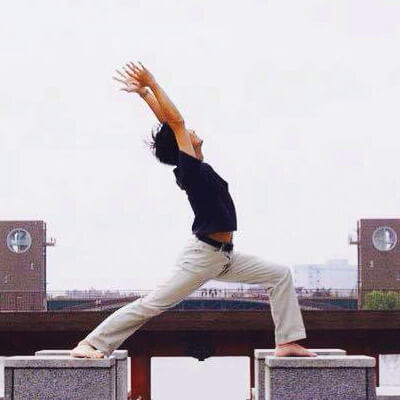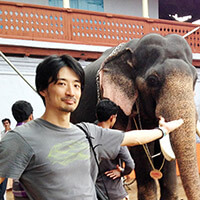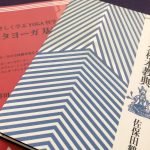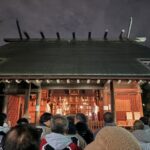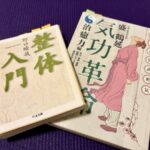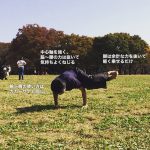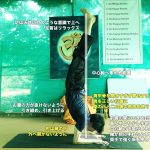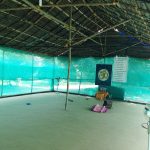「クンダリニー・タントラ/スワミ・サティヤナンダ・サラスワティ著」を読み進めていく形で、クンダリーニヨガ(クンダリニーヨーガ)の概要を紹介していく連載記事です。
「Kundalini Tantra 英語版 ペーパーバック」 Swami Satyananda Saraswati (著)
「Kundalini Tantra 英語版 Kindle」 Swami Satyananda Saraswati (著)
今回は、第2章最後の10節、サハスラーラの位置や特徴と、ヨーガのゴールであるサマーディとクンダリニーの関係性に関する部分です。
以下、引用部分の太字強調は私が個人的に重要と思ったところを示したものです。
サハスラーラの概要・位置・シンボル
Sahasrara is not a chakra as is often thought. Chakras are within the realm of the psyche. Consciousness manifests at different levels according to the chakra that is predominantly active. Sahasrara acts through nothing and yet again, it acts through everything. Sahasrara is beyond the beyond (paratparam) and yet it is right here. Sahasrara is the culmination of the progressive ascension through the different chakras. It is the crown of expanded awareness.
サハスラーラは、頭頂のチャクラとして扱われることが多いですが、サティヤナンダ氏の理論ではサハスラーラはチャクラとは別のものとして扱っているようです。
その理由として、サハスラーラは他のチャクラとは存在する次元や機能の仕方が異なるようで、各チャクラは精神的な次元に存在するものであり、意識はチャクラを介して現れますが、サハスラーラは何も介さずに全てに対して作用しているといいます。
The power of the chakras does not reside in the chakras themselves, but in sahasrara. The chakras are only switches. All the potential lies in sahasrara.
各チャクラを覚醒することによって現れる力は、そのチャクラ自体に貯蔵させているわけではなく全てはサハスラーラにあり、チャクラは単にスイッチのようなものであると説明されています。
The literal meaning of the word sahasrara is ‘one thousand’.
「サハスラーラ」の意味は「1000」であり、サハスラーラは1000枚の花弁を持つ蓮華をシンボルとしています。1000は「とても重要」あるいは「無限」を意味しており、その花弁の色は赤または様々な色をしていると説明されています。
神智学の文献などでは、霊的な視覚でサハスラーラを視ると実際に972枚の花弁が見えると述べられています。花弁の数については、1008枚など諸説があります。
(画像出典:Wikipedia)
Sahasrara is both formless (nirakara) and with form (akara), yet it is also beyond, and therefore untouched by form (nirvikara). It is shoonya, or in actual fact, the void of totality. It is Brahman. It is everything and nothing.
サハスラーラは形なき状態と形のある状態を両方持っている、など二極的な状態を両方持っているというように表現されるなど、論理を超えたものであると捉えられます。ブラフマン(宇宙意識)である、総合性である、などとも表現されます。「全て(物)である」というのではなく「総合性(概念)」というところがひとつのポイントです。
もはや言葉で説明することができない領域ではありますが、ここがヨーガの最高地点であり、完全な統合であるといいます。
シヴァとシャクティの融合、そして悟り
When kundalini shakti reaches sahasrara, that is known as union between Shiva and Shakti, as sahasrara is said to be the abode of higher consciousness or Shiva.
サハスラーラは高次元の意識であるシヴァの住まう場所であり、クンダリニー・シャクティが上昇してサハスラーラに至った時、シヴァとシャクティの融合が起こり、そこから大いなる経験が始まるといいます。
シヴァとシャクティは、「男女」など相反する二元性の象徴であり、その融合が起こることによって、大いなる一つのものへの意識へと還っていきます。
At this point the individual man dies. I don’t mean that physical death occurs; it is death of the mundane awareness or individual awareness. It is death of the experience of name and form. At this time you don’t remember the ‘I’, the ‘you’ or the ‘they’.
そこで「個人としての死」を迎え、それは物理的な肉体の死ではなく、日常を支配していたエゴの意識(名と形を持つもの)が終わるということを意味し、そのとき「私」「あなた」「第三者」といった区別はなくなり全ての意識と経験がひとつになるといいます。
Every mystical and religious system of the world has its own way of describing this experience. Some have called it nirvana, others – samadhi, kaivalya, self-realization, enlightenment, communion, heaven and so on.
世界の様々な宗教はこの体験をそれぞれの表現で描いており、ニルヴァーナ、サマーディ、カイヴァイヤ、自己認識、悟り、コミュニオン、天国、などいろいろな言葉で表されます。
それぞれの教典には、表現は違えど、サハスラーラのことを説明したものがたくさん見つかるといいます。しかしそれらを理解するには、通常とは異なる意識状態で読み解いていく必要があると説明されています。
ラージャヨーガのサマーディと、クンダリニーの関係
この節の締めくくりとして、パタンジャリのヨーガスートラが扱うラージャヨーガ、そしてそのゴールであるサマーディと、クンダリニーヨーガの関係性について説明されます。
ヨーガスートラやハタヨーガプラディーピカーを一通り理解した人にとっては、興味深い話題かもしれません。そのあたりに、現代ヨガのような身体を使ってヨガと、古来からある瞑想中心のヨーガの、関係性を解く鍵が隠れています。
サティヤナンダ氏は、ヨーガスートラは2600年前に書かれたと言っていますね。現代に伝わっているヨーガスートラの形に編纂されたのは4〜5世紀(1500年前ごろ)と言われていますが、その内容自体はもっと古くからあったものがほとんどであり、ヨーガスートラは「古典をまとめあげたもの」というイメージです。
参考:ヨーガスートラとは 〜現代ヨガの重要教典・心の扱い方・瞑想の教科書〜
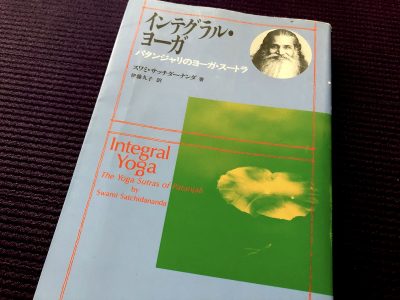
In the Yoga Sutras of Patanjali you will not come across the word kundalini, as this text does not directly deal with kundalini yoga. However, not every saint, rishi or teacher has referred to kundalini by this name. Kundalini is the subject matter of tantra.
「クンダリニー」自体はタントラの概念で、ヨーガスートラには直接的に「クンダリニー」という言葉を用いた説明は出てきません。しかし多くの教典や聖者の教えにおいて、「クンダリニー」という言葉が共通で使われていたわけではなく、その概念は別の形で用いられているといいます。
パタンジャリがヨーガスートラを書いた約2600年前、当時はブッダの教えや優れた哲学者たちが中心となった時代で、タントラはインドにおいてひどい扱いを受けていたといいます。そしてクンダリニーやシッディの力は誤った使われ方をしていましたが、その教えと知識を維持していくために、タントラの用語以外の表現を使って伝えていく必要があったと説明されています。
In the raja yoga of Patanjali, emphasis is placed on the development of a state called samadhi. Samadhi actually means supermental awareness. First comes sensual awareness, then mental awareness, and above that is supermental awareness, the awareness of your own self.
パタンジャリのラージャヨーガは、サマーディと呼ばれる超心理的な気づきを伴う状態に至ることに重きを置いています。
気づきの段階として、まず感覚的な気づき、心理的な気づき、そして超心理的な気づき(真の自己への気づき)へと至っていきます。
形や音の知覚・触る・味わう・嗅ぐなどに関するものは感覚的な気づきであり、時や空間・物体に関する気づきは心理的な気づきであり、そして超心理的な気づきは「点」の気づきではなく「過程」のような幅のある気づきであるというように説明されています。
サマーディとはそのように、特定の「点」の経験ではなく「連続的」な経験であり、新たなステージへと進化していくものであるといいます。
Therefore, Patanjali classifies samadhi into three main categories. The first is known as savikalpa samadhi, that is, samadhi with fluctuation, and it has four stages – vitarka, vichara, ananda and asmita. The second category, asampragyata, is samadhi without awareness, and the third category, nirvikalpa, is samadhi without any fluctuation.
パタンジャリはサマーディを3つの主なカテゴリーに分けており、1つ目はサヴィカルパ・サマーディで、その中にも4つの段階(ヴィタルカ・ヴィチャーラ・アーナンダ・アスミター)があります。2つ目はアサムプラジュニャータ・サマーディで、これは気づきを伴わないサマーディであるとサティヤナンダ氏は説明しています。3つ目はニルヴィカルパ・サマーディで、区別なきサマーディなどと呼ばれます。
参考:ヨーガスートラ(ラージャヨーガ・アシュターンガヨーガ)における、サマーディの段階
These names only indicate the particular state your mind is in during the samadhi experience. After all, the erosion in mental awareness does not take place suddenly; the normal mental awareness does not come to an abrupt end. There is development of one type of awareness and erosion of another. The normal consciousness fades and the higher awareness develops, and therefore, there is a parallel interaction between the two states.
サマーディにも段階があり、しかしそれらは明確に次のステップへ移る瞬間があるのではなく、徐々に変化していく期間があり、前後の状態は相互に関係しているとサティヤナンダ氏は説明しています。このあたりは各チャクラの覚醒との関係性が感じられます。
In tantra it is said that when kundalini is ascending through the various chakras, the experiences one has may not be transcendental or divine in themselves, but they are indicative of the evolving nature of consciousness. This is the territory of savikalpa samadhi, sometimes illumined and sometimes dark and treacherous.
タントラの教えによれば、クンダリニーが各チャクラを通って上昇していく際に、超越的で神聖な経験を伴わなかったとしても、意識が進化していく兆候は現れていくといいます。
この状態のときはヨーガスートラで言うところのサヴィカルパ・サマーディの領域であり、時には輝かしい経験をするかもしれませんが、時には暗く危険な経験をするかもしれない、と説明されています。
From mooladhara up to ajna chakra, the awareness is experiencing higher things, but it is not free from ego. You cannot transcend ego at the lower points of awakening. It is only when kundalini reaches ajna chakra that the transcendence begins. This is where the ego is exploded into a million fragments and the ensuing death experience occurs. At this point savikalpa ends and nirvikalpa begins. From here, the energies fuse and flow together up to sahasrara, where enlightenment unfolds.
ムーラーダーラチャクラからアージュニャーチャクラへクンダリニーが上昇するにつれて、高次元の経験や気づきが現れることがありますが、低位の各チャクラが目覚めてもまだエゴの影響や執着は残り続けています。
アージュニャーチャクラまで至って始めて、超越的な変化が始まると説明されています。そこでようやくエゴは粉々に分解され、先に述べられたような「エゴの死」を経験します。
そこでサヴィカルパ・サマーディが終了し、ニルヴィカルパ・サマーディが始まるといいます。そこでエネルギー(おそらくイダー・ピンガラーを上昇してきた太陽・月の相反するエネルギー)は融合しサハスラーラへと向かい、悟りの光が見え始める、という流れが説明されています。
In tantra, sahasrara is the highest point of awareness, and in Patanjali’s raja yoga, the highest point of awareness is nirvikalpa samadhi. Now, if you compare the descriptions of sahasrara and nirvikalpa samadhi, you will find that they are the same. And if you compare the experiences of samadhi described in raja yoga with the descriptions of kundalini awakening, you will find that they are also the same. It should also be noted that both systems talk about the same types of practices.
タントラではサハスラーラは最も高次元の気づきをもたらすものであり、パタンジャリのラージャヨーガではそれはニルヴィカルパ・サマーディと呼ばれる状態であると述べられていて、クンダリニーの覚醒によって起こる経験の描写と、サマーディによって起こる経験の描写を注意深く比較してみると、それらは結局同じ状態を示していることに気づきます。
Raja yoga is more intellectual in its method of expression and is more in tune with philosophy, and tantra is more emotional in approach and expression. That is the only difference. As far as I can understand, kundalini awakening and samadhi are the same thing. And if you understand the teachings of Buddha and the other great saints and teachers, you will find that they have also spoken about the same thing but in different languages.
ラージャヨーガはより知的な道であり、哲学的な方法を用いてサマーディに至ることを目指しますが、タントラはより感覚的なアプローチと表現を用います。
用いる方法が違うだけで、クンダリニー覚醒によって至る状態と、ヨーガスートラのサマーディによって至る状態は、結局同じであるとサティヤナンダ氏は述べています。そこには「私の理解している限り」と慎重な文言が加えられています。
それがブッダの教えやその他の偉大な聖者の教えであっても、結局のところ同じことを言っているのであり、別の言語・表現を用いているだけなのだ、と説明されています。
これでようやく第2章が終わり、次から第3章、クンダリニーヨーガの実践に入っていきます。
次記事:「クンダリニー・タントラ」を読む【38】第3章 1節:クンダリニーヨーガのルールと準備
前記事:「クンダリニー・タントラ」を読む【36】第2章 9節:ビンドゥ・ヴィサルガ
参考文献
「Kundalini Tantra 英語版 ペーパーバック」 Swami Satyananda Saraswati (著)
「Kundalini Tantra 英語版 Kindle」 Swami Satyananda Saraswati (著)
「クンダリニー」ゴーピ・クリシュナ (著), 中島巌 (翻訳)
「Asana Pranayama Mudra Bandha 英語版」Swami Satyananda Saraswati (著)
「チャクラ」C.W.リードビーター (著), 本山 博 (著), 湯浅 泰雄 (著)

